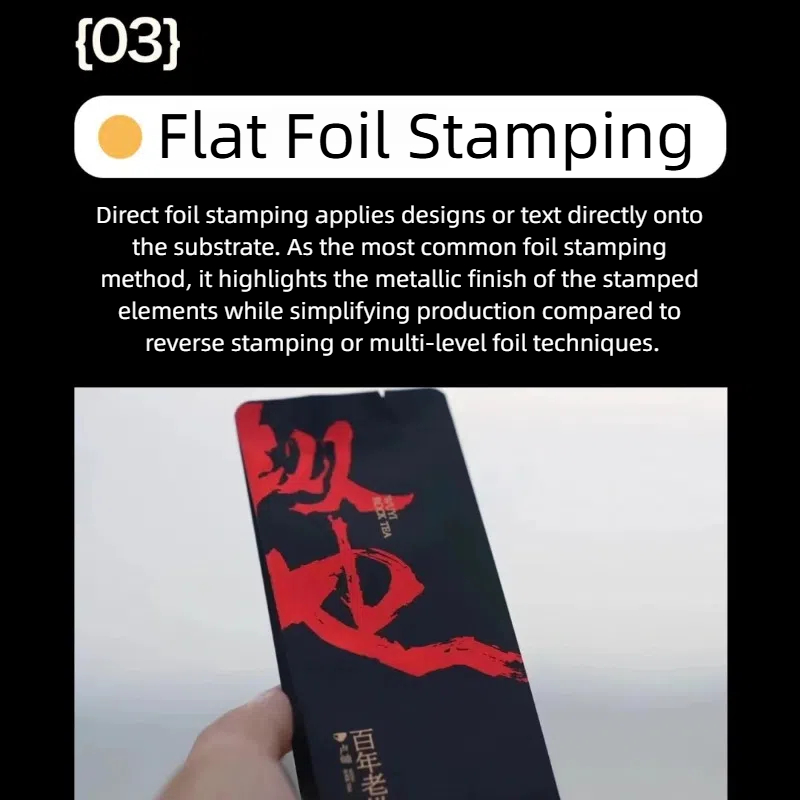

Flat Foil Stamping
Flat foil stamping is direct foil stamping applies designs or text directly onto the substrate. As the most common foil stamping method, it highlights the metallic finish of the stamped elements while simplifying production compared to reverse stamping or multi-level foil techniques.
Flat foil stamping (also called standard foil stamping) is a traditional hot stamping process that applies metallic or pigmented foil onto packaging surfaces without creating dimensional effects (unlike embossed/debossed foil). It delivers a smooth, high-gloss, or matte finish for premium branding.
Key Features
✔ Smooth Surface – No tactile embossing; pure metallic/pigmented finish
✔ Cost-Effective – Lower tooling costs vs. 3D foil stamping
✔ High Precision – Sharp edges for fine details (text, logos, borders)
✔ Material Flexibility – Works on paper, cardboard, laminates, and some plastics
Common Applications in Packaging
Brand Logos & Typography
Gold/silver foil branding on cosmetic boxes
Matte black foil for minimalist luxury packaging
Security & Anti-Counterfeiting
Holographic foil stamps on pharmaceutical boxes
Scratch-off verification labels
Decorative Elements
Geometric patterns on gift boxes
Gradient foil effects (e.g., Pantone metallics)
Sustainable Packaging
Recyclable foil options on eco-friendly cartons
Process Comparison: Flat vs. 3D Foil Stamping
| Factor | Flat Foil Stamping | 3D Foil Stamping |
|---|---|---|
| Surface Texture | Smooth | Raised/indented (embossed) |
| Tooling Cost | Lower (single-level dies) | Higher (multi-level dies) |
| Production Speed | Faster (single-step process) | Slower (requires precise pressure) |
| Visual Impact | Elegant, subtle metallic shine | Bold, tactile luxury effect |
Technical Considerations
Substrate Requirements
Works best on coated papers (gloss/matte) for optimal adhesion
Avoid textured surfaces (may cause uneven foil transfer)
Foil Types
Metallic (gold, silver, rose gold)
Pigmented (matte black, white, pastels)
Special Effects (holographic, diffractive, transparent)
Printing Integration
Can be combined with offset/digital printing for hybrid designs
Requires precise registration (±0.1mm tolerance)